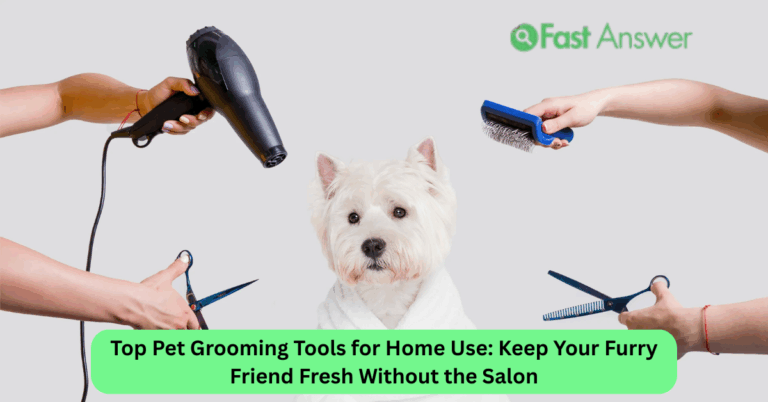Pet Dental Care Routine at Home: Keep Your Pet’s Smile Healthy and Breath Fresh
Dental health plays a critical role in your pet’s overall well-being, yet it’s one of the most overlooked aspects of routine care. A proper pet dental care routine at home can help prevent tartar buildup, gum disease, tooth loss, and even serious health issues linked to poor oral hygiene. Whether you have a dog, cat, or small animal, daily or weekly dental care not only improves their quality of life it also saves you from costly vet visits down the line. This guide is for pet parents who want simple, effective ways to support their pet’s oral health from the comfort of home.
Why Brushing Matters More Than You Think
Just like humans, pets are vulnerable to plaque, bacteria, and dental decay. Brushing your pet’s teeth is the most effective way to remove buildup and prevent gingivitis. While it might seem daunting at first, many pets grow comfortable with brushing when introduced gradually using positive reinforcement.
Start with a pet-safe toothbrush or finger brush and specially formulated pet toothpaste never use human toothpaste. Focus on the outer surfaces, especially the molars, where tartar tends to collect. Even brushing just a few times a week can significantly reduce dental disease risks and improve your pet’s breath.
Dental Treats and Chews That Actually Help
For pets that resist brushing or need a little extra support between cleanings, dental treats and chews can be a game-changer. These products are designed to reduce plaque through mechanical chewing action or with added ingredients that fight bacteria and freshen breath.
Look for chews that carry the Veterinary Oral Health Council (VOHC) seal, which indicates clinically proven effectiveness. Just be mindful of calories and size choose treats appropriate for your pet’s weight and chewing strength. While not a replacement for brushing, they’re a great supplement to your routine.
Water Additives and Oral Rinses for Extra Protection
Water additives are another tool in your pet dental care routine, especially for those who won’t tolerate brushing. These odorless, tasteless solutions are added directly to your pet’s water bowl to help reduce bacteria and prevent plaque buildup.
Oral rinses and gels can also be applied directly to your pet’s gums using your finger or a cotton pad. Some contain antiseptics that target harmful microbes, while others include enzymes to break down plaque. Combined with other care methods, these tools add an extra layer of defense against dental issues.
Diet and Toys That Support Dental Health
Your pet’s diet impacts more than just their waistline it plays a major role in oral hygiene. Dry kibble generally helps scrape plaque more effectively than wet food, although some specially formulated dental diets go a step further with larger kibble shapes or plaque-fighting ingredients.
Additionally, interactive toys like rubber chews or rope toys can provide cleaning action while your pet plays. Supervised chew time with the right toys not only satisfies their instincts but also aids in maintaining gum and tooth health naturally and safely.
When to See a Vet for Professional Cleanings
Even the best at-home routine can’t replace professional care entirely. Most pets will need a veterinary dental cleaning at some point, especially if signs of tartar buildup, bad breath, or gum redness appear. These cleanings are done under anesthesia for thorough plaque removal and gum evaluation.
Your vet can also check for loose or broken teeth, abscesses, or signs of infection that aren’t always visible to the naked eye. Ideally, your pet should have a dental exam during their annual checkup. Consistent at-home care can reduce the frequency of professional cleanings but doesn’t eliminate the need entirely.
FAQ
1. How often should I brush my pet’s teeth at home?
Aim for daily brushing, but even 2–3 times a week can significantly reduce plaque and tartar buildup.
2. Can I use human toothpaste on my dog or cat?
No. Human toothpaste contains ingredients that can be toxic to pets. Always use pet-specific formulas.
3. Are dental chews enough to replace brushing?
No, but they’re a helpful supplement. Brushing remains the most effective method for oral hygiene.
4. What are signs of dental issues in pets?
Bad breath, red or bleeding gums, loose teeth, drooling, and reluctance to eat are all warning signs.
5. Is anesthesia safe for pet dental cleanings?
Yes, in most cases. Your vet will assess your pet’s health to ensure anesthesia is safe before any procedure.





